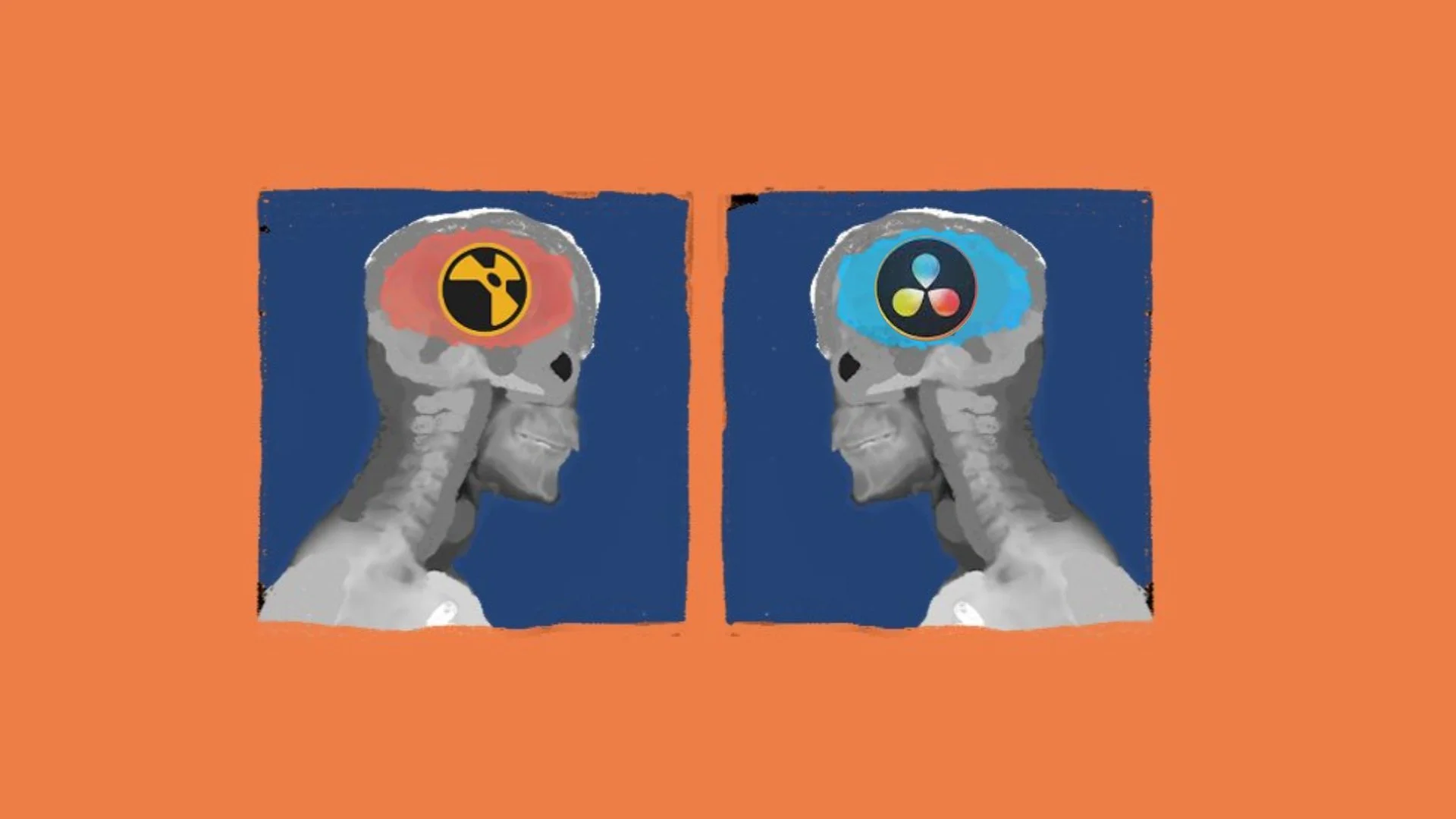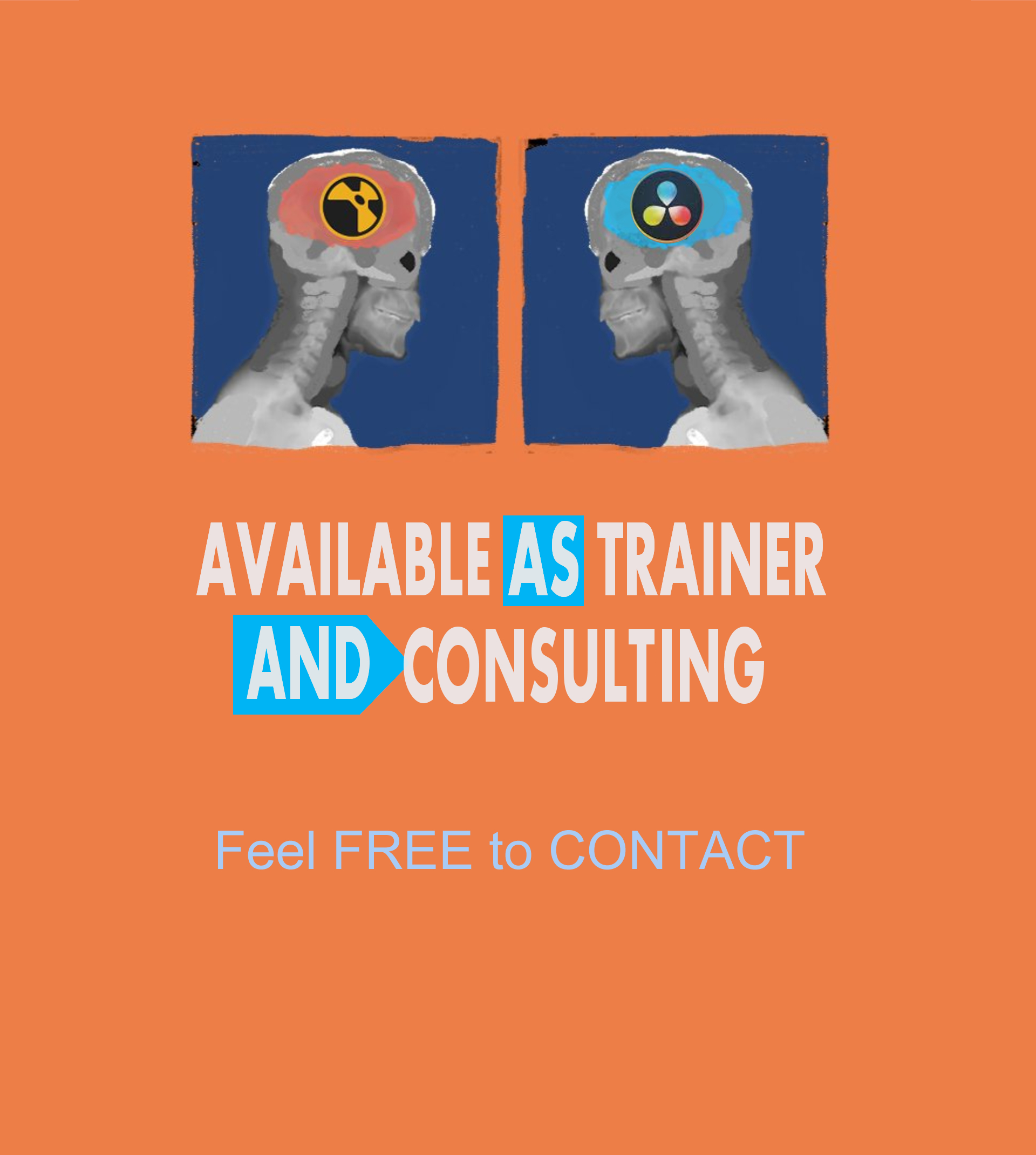/ Nuke to Fusion (fast guide)
Jorge Vidal
As Nuke is becoming pretty expensive, I’ve licensed a Fusion/Resolve which reminds me my old Flame/Smoke workflow. On this article you will find a comparative and some tips for fast boarding Fusion if you are Nuke user.
(Updated April 2025)
/ Intro to “All in One philosophy”
(This is a intro regarding finishing softwares, so if you are hurry jump to next section).
I did two Portugal Tv movies around 2010 just using Autodesk Smoke.
It was great to do color grading, all the vfx and title design inside a single app.
The advantajes on this system is that you have your TIMELINE and you can store any vfx at every clip cut, including motion graphics or any magic touch required. This is FAST and useful when you have a lot of shots to do and you are the SINGLE artist, as it use to be in the old times, mostly in advertisement.
This ALL IN ONE philosophy was implemented in Nuke Studio around 2016, but I don’t know who is using it. Probably as Nuke Studio is a slow player and just used for conforming and export.
Instead Flame/Smoke always have been the best for REAL TIME as they use to be driven by a single artist and before 2010 old material use to be ingested by tapes.
Discreet use to have different levels for VFX: form Edit to Fire, Smoke, Flame and Inferno, but around 2012 aprox. Flame become a ALL IN ONE, including Smoke full editorial interface and Lustre for color grading etc. This “all in one” phylosophy, blending editorial and finishing, has become kind of standard on all the “Studio” packages (Nuke Studio, Flame Premium, Resolve, Adobe Studio, etc.).
There is a contradiction in the thing that: for complex productions the Studio packages are just used for conforming or playing the clips. As I’ve say, Nuke Hiero was designed to replace Flame, but nobody use it as standalone Vfx station. And sadly in most of the companys Flame become just a “player” as general vfx work was done in Nuke by individual artists.
Now we also have several image sequence players as Rv or Shotgun for show playlist to clients, so this “on suite” to do vfx and “show it” belongs to dinosaurs nowdays. What’s the point then regarding have a Studio software? The point is: for supervision and for use as small studios or independent artists.
Davinci Resolve Studio can be used instead of Autodesk Flame. Is cheaper and worth. And can be used instead of Nuke, as it has also python, camera tracker, particles, etc. But this use is just a recomendation for small studios or single driven artist.
I will test it and watch pros and contras. This is a work in progress list, so will be updated.
/ Contras:
The big lack regarding Fusion compared to Nuke is the color managment.
Sounds crazy as DaVinci is a color industry standard, but the thing is that color managment for comp requires a more easy workflow when you share different medias. This is one of the strongest skill in Nuke.The other big lack is regarding Deep compositing, but this is used only in big film studios as Weta, etc.
Less powerful channels and layers workflow. This is mandatory for strong pipeline workflow in big studios.
/ Pros:
Very good for broadcast Graphics and Titles.
Very fast for checking all material and color dev.
Good for basic channels and layers as you can use timeline combined with Fusion.
It is possible to create a complex pipeline workflow using Cloud.
As editorial managment is the best tool now.
/ Issues:
MY ISSUES REPORT: I cannot reccord AUDIO on fairlight using daVinci in my Rocky LINUX, as ALSA doesn´t detect my devices. Looks like Resolve has some troubles in Linux. I need some time to work on that. Instead, Audicity, Kdenlive, OBS, etc. can detect my micro without issues. (Updated September 2024). Not big deal for a vfx artist, but very annonyng for an editor which needs offline audio.
/ FIRST OF ALL: Set your Preferences closer to Nuke workflow.
Here you can find as first step a way to mimetize Fusion closer to Nuke.
These are Alan Bovine preferences, thanks to him you can start working fast.
It is a good idea to set up the preferences close to Nuke to being more familiar driving the software. Here are the steps (follow the snapshots down).
You need to go to preferences.
On top menu, go to “Fusion” and there to “Fusion Settings”, will open a big window where are system preferences and user preferences.You can choose user preferences and click on NEW button.
“UserPath” will be written instead of “from”.
This way you are sending your preferences to this folder, instead of your home folder.
Of course you can use any folder you want, for this example I’m gonna use “nuke2fusion-master” which will contain all my setups.Instead of “to” paste your downloaded folder (“nuke2fusion-master”). This can be a little confused as you need to put the path and delete the “to” and “from” from the text box, I mean: replace by your paths.
Don’t forget to SAVE and check that path is stored.
After that what you will have on restarting the software “nuke2fusion-master” folder is becoming your main data for preferences, where you can have also all your LUTS, layouts or macros.
Finally copy the specific files from nuke2fusion folder to their correspondence preference folder, example: fusion.fu goes to :Config. This are the ready to use preferences, do a copy and reserve the originals for the future.
If you store this in a portable disk you can have with you anyplace and will survive any software update. I’m linux user, so from time to time I need to update my OS. As Resolve is a little “special” reggarging backups and preferences, I feel better having this folder under my eyes, avoiding hidden folders or user data stored close to root.
NOTE: there are two different folders:
“:Config” wich is for regular version and
“s:Config” in case you are using Studio Version.
This is important as your preferences will be different, so maybe you would need to use the “s:” version if you have license.
In my own I use Studio version, but also have Fusion Standalone, which is useful just for comp and more stable. Both version have independent installers so keep it in mind. I duplicate my files for both set of preferences, as you can see in last screenshot.As a special bonus, I recommend also to store your temporal data in another disk.
I use always a cache disk. Same for Nuke. As Centos root disk can be easy filled and play against you. I’ve redirect the Temp path to my own cache disk. Remember: once thing are preferences, but other are cache or video data.
As extra step, you can use “octogonal pipes” in your flowchart, less annoying than the default ones. Also you can use similar “dots” for nodes connection as in Nuke, using “.” .
If you are linux user and wanna scale up your UI, here is a very interesting tip using the .desktop file.
Thanks to John Been and Shane Milton
/ Saving Fusion Comp from Davinci as external script.
On using DaVinci Resolve it is common to create a “Fusion Comp”.
This is an equivalent to script comp in Nuke Studio or a DVE/Action in Flame and Smoke. It creates an empty clip ready for comp, useful if you wan to start from scratch.
You can drag this empty clip to your timeline and jump into using the “fusion”icon.
Once in Fusion desk you can select any node and go to “settings”, from there you can “save as” your fusion comp as an independet file, this way you can open it on Fusion standalone version, or just to have a backup sepparated from your Resolve project file.
Process is similar to copy-paste on Nuke, as all nodes are scripting text.
/ Matte and ALPHAs in Fusion.
Understanding the matte workflow in Fusion is pretty confusing for a nuke user.
So here a fast note about it:
Use white entry for solid and blue for roto.
And add the node “matte control”.
RESUME:
Yellow = Bg.
Green = Fg.
For mattes = other entrys: grey, blue or white.
You NEED TO tune up your matte using the matte control (kind of erode node).
/ Show thumnails as Nuke.
Using right button in VIEWPORT you can SHOW THUMNAILS and you will get similar picture in the nodes as Nuke.
/ Python for Fusion.
A few info online compared to Nuke and less use of scripting in Fusion, but here you can find some useful links:
/ TIPS for saving time in DaVinci Resolve.
/ Youtube compilation clips.
Very nice tips on this video that will speed up your workflow.
Thanks Casey Faris
/ USD support.
From v18.5 we can import USD files which looks very nice and fast.
I will upload some tips further about how to improve your workflow between blender and Fusion.
/ v20 updates 2025.
Additional cryptomatte and layer selection on v20, also AI better matte generator.
Automatic subtitle and “karaoke”








Rocky linux looks like best Vfx Os replacement for Centos